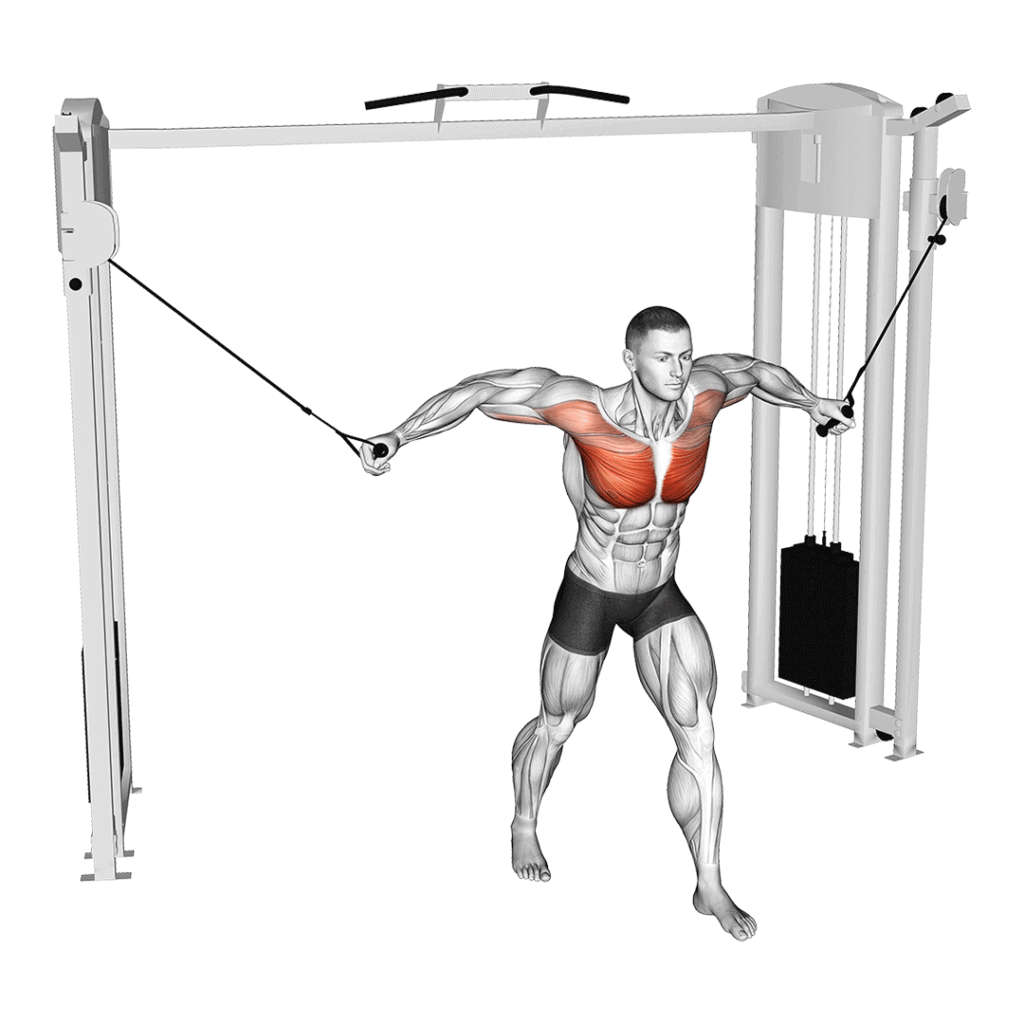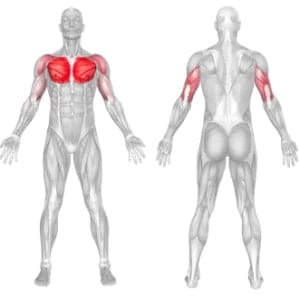High Cable Crossover
Exercise / Chest
High Cable Crossover
High cable crossover is a cable exercise that targets the chest muscles. It involves using a cable machine with the pulleys set to the highest position and crossing the arms in front of the body at the end of the movement. This move targets the pecs, specifically the lower, inner and outer areas, while also working the shoulders and triceps as secondary muscles.
How to do :

following these tips and tricks
- Adjust the cables: Adjust the cables to the highest position on both sides of the cable machine. Attach the handles to each cable.
- Stand in the center: Stand in the center of the machine, facing away from it. Hold the handles with your palms facing down.
- Position yourself: Take a step forward with one leg or lean forward slightly, keeping your feet shoulder-width apart. Your arms should be extended out to your sides, parallel to the floor.
- Cross the handles: Slowly bring both handles towards each other, crossing them in front of your body. Your arms should be slightly bent at the elbow.
- Squeeze your chest: Pause for a moment and squeeze your chest muscles.
- Return to the starting position: Slowly lower the handles back to the starting position, keeping your arms slightly bent.
- Repeat: Repeat the exercise for the desired number of repetitions.
- Keep your feet firmly planted on the ground throughout the exercise to maintain stability.
- Focus on contracting your chest muscles as you bring the handles together
- Keep your arms slightly bent to avoid locking out your elbows and to maintain tension in your muscles.
High Cable Crossover Benefits
High Cable Crossover / Muscles worked
By incorporating the high cable crossover into your chest workout, you can target different areas of your chest, increase your range of motion, and build overall chest strength. Remember to perform the exercise with proper form, gradually increase the weight and reps, and always warm up and cool down properly.

0 %
Target - Pectoralis Major, Sternal-Lower
0 %
Synergists - Pectoralis Major, Clavicular
0 %
Synergists - Pectoralis Minor
0 %
Synergists - Rhomboids
0 %
Antagonist Stabilizers - Erector Spinae
